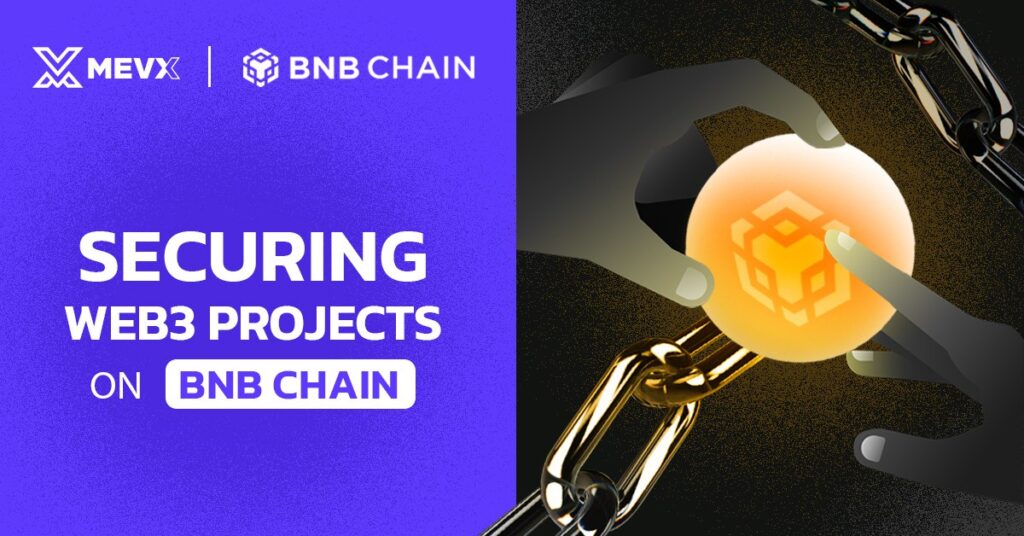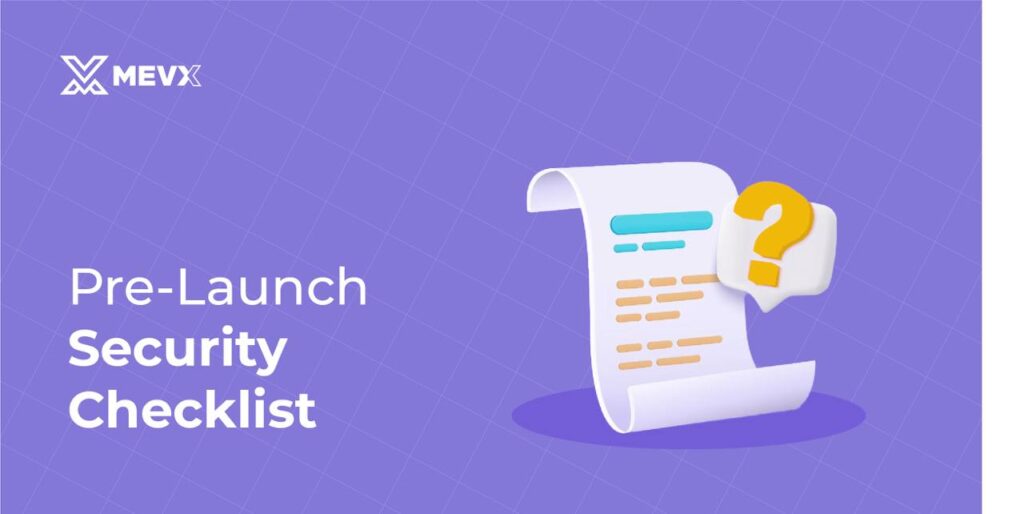The decentralized nature of Web3 tech combined with transactions of valuable amounts means that each Web3 project is a top priority to protect. Temporary relief is bringing on experienced Web3 security engineers to conduct a security audit. For protection on a long-run scale, BNB Chain projects must have good security protocols and adhere to best practices throughout the life cycle of the project. In this article, a detailed guide on Securing Web3 projects on BNB Chain is provided.

Securing Web3 Projects on BNB Chain
Building a project on Web3 that is integrated with security right from the outset will save on costly and time-investive issues that will only emerge much later on. Developers have to have good know-how of security fundamentals, smart contract security, good tests, and issues of Web2 security.
Smart Contract Security Coding Recommendations
In securing Web3 projects on BNB Chain, smart contract weaknesses can lead to the loss of a significant amount of money. The following best practice makes a safe and effective smart contract possible to write:
- Use the latest version of Solidity to have the benefits of fixes and enhancements.
- Use a well-established library to have minimum weaknesses and lower audit scope.
- Handle external calls carefully, verifying values of returns within function calls like transfer, send, and call.
- Implement event logging of changes of calls of privilege to have better monitoring of emergencies.
- Follow the Checks-Effects-Interactions pattern to protect smart contract calls from token transfer hazards and reentrancy attacks.
- Ensure precise arithmetic operations, avoiding rounding errors that could lead to precision loss.
- Use Chainlink VRF to have randomness rather than using on-blockchain block data.
- Avoid single-source data retrieval, especially for prices, as they can be manipulated through flash loans. Utilize decentralized oracles instead.
- Minimize gas costs by avoiding unbound or too-extended loops accessing storage variables.
- Use a clear and consistent convention of naming to have better readability of your code along with maintainability.
- Implement emergency suspension mechanisms to mitigate potential security breaches promptly.
Testing Recommendations
Even with secure coding practices, thorough testing is essential to validate the security and functionality of smart contracts. Best practices for testing include:
- Achieve near 100% unit test coverage, ensuring core functionality is rigorously tested.
- Conduct business process and functional usability tests to verify the contract behaves as expected.
- Use automated analysis tools to quickly detect common vulnerabilities. Salus Security provides automated vulnerability detection services to enhance security evaluations.
Web Front-End and Back-End Security
Web3 projects often integrate Web2 components, such as front-end applications and back-end servers, which require additional security measures. Some key considerations include:
- Conduct regular security assessments to identify and remediate vulnerabilities.
- Implement penetration testing tailored for Web3 applications to uncover potential attack vectors in Web2-Web3 integrations.
- Secure middleware components to prevent data leaks and unauthorized modifications.
Pre-Audit Self-Checklist
Security audits in securing Web3 projects on BNB Chain are crucial but can be expensive and time-intensive. To maximize audit efficiency, project teams should follow a pre-audit checklist:
- Finalize contract development and provide a commit hash for targeted auditing.
- Ensure contracts compile without errors or warnings.
- Verify that all tests pass successfully.
- Maintain clean code by removing outdated comments, unused functions, and redundant logic.
- Use clear annotations for all functions and parameters.
- Convert public functions to external functions when possible to optimize gas usage and improve auditability.
- Document unchecked operations with explanations justifying their safety.
- Highlight critical code segments for auditors to prioritize.
Additionally, pre-screening security auditors is essential. Teams should:
- Research security incidents in their sector.
- Compare audit reports from different firms.
- Review past client experiences to assess auditor credibility.
Pre-Launch Security Checklist

Before deploying a project, teams must ensure all necessary measures for securing Web3 projects on BNB Chain are in place:
- Address all audit recommendations and implement required changes.
- Consider a second audit if significant changes were made post-audit.
- Establish a bug bounty program through platforms like Immunefi or HackenProof.
- Set up real-time monitoring and alerting systems.
- Develop an incident response plan to handle security breaches effectively.
- Prepare emergency scripts to pause smart contracts in case of an exploit.
Post-Launch Risk Monitoring & Emergency Response
Once deployed, continuous monitoring and emergency preparedness are critical to maintaining security and user trust.
Runtime Security Monitoring
Real-time monitoring helps detect security threats early, minimizing potential damage. Best practices include:
- Track key events to detect anomalies in smart contract execution.
- Analyze transaction patterns to identify suspicious activities.
- Correlate blockchain events to detect business logic flaws.
Emergency Response Protocols
A well-defined incident response is key to minimizing incident severity in securing Web3 projects on BNB Chain:
- Activate emergency pause functions to stop losses immediately.
- Communicate transparently with users, providing timely updates.
- Capture forensic snapshots of compromised systems for analysis.
- Review exploit transactions with security experts to identify root causes.
- Draft and publish a post-mortem report, detailing the incident, impact, and mitigation steps.
- Develop and test patches following best deployment practices.
- Implement fixes and resume operations securely.
Conclusion
As the ecosystem of Web3 grows, security is of top importance to BNB Chain ventures. By maintaining best practices in securing Web3 projects on BNB Chain through every stage of development, audit, and monitoring, project teams can much better ensure resilience and protection. By doing that, assets, users, and project integrity will stay safe within increasingly complex digital spaces.
Share on Social Media:
